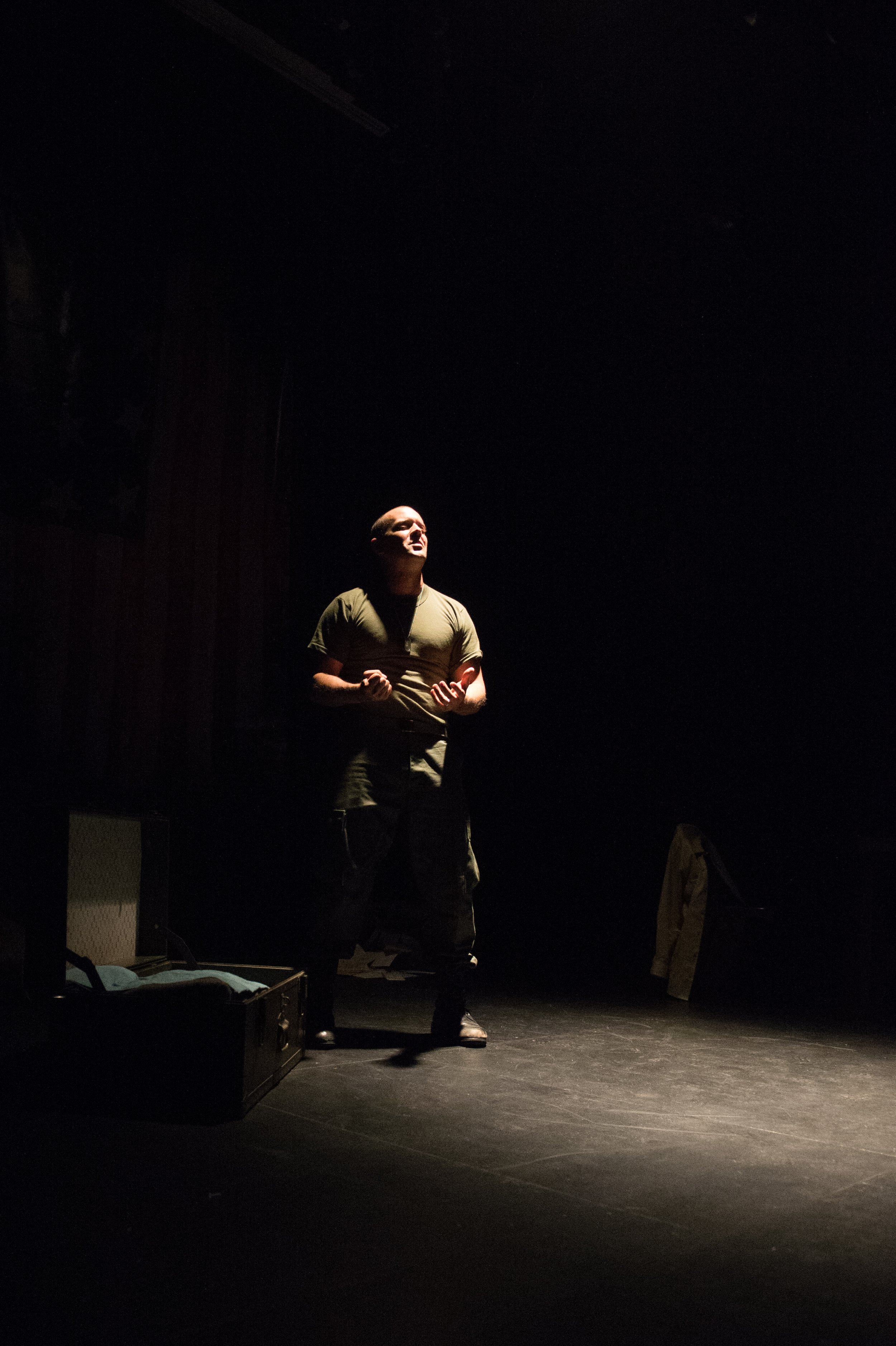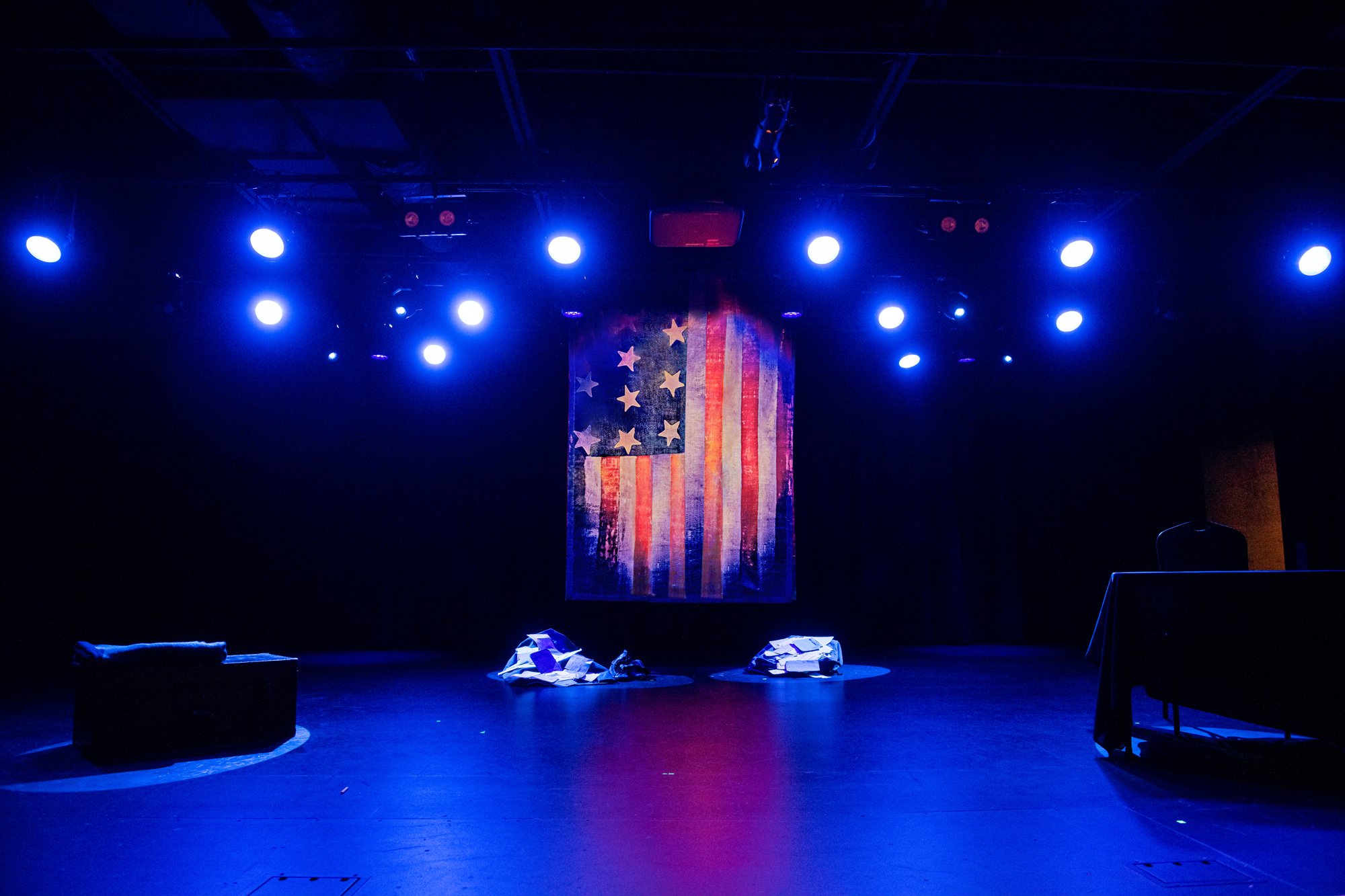MISSION STATEMENT
My goal with The American Soldier has never been political but to sincerely thank our veterans and their families for their sacrifice and service to our nation.
To raise awareness of the struggles Veterans and Military families face when they either come home from war, transition out of the military, and, of course, the invisible wounds of PTS. Most importantly, I want to help those who have no connection to the military better understand what service to our nation sincerely means.
I guess the goal since I first performed the play in 2015 for eight people in the Lower East Side of Manhattan has been to pull back the curtain to war and give meaning to the term we throw around so frivolously, “Thank you for your service.”
I sincerely hope audiences will go away with a deeper appreciation of the tremendous sacrifice our servicemen, servicewomen, and their families have made for our country.
Did I serve? No, I have never served in the military, but my family has served. My sister retired as an Srgt. in the Army; a nephew became a Marine, and two nieces are in the National Guard.
“Flawless and powerful”
- The Huffington Post

Producton History
"His one-man show...he honors our veterans in their own words..."
– The Military Times

THE PLOT + TECHNICALS OF the show
Plot
There are fourteen characters based on real stories and actual letters written by veterans and their family members from the American Revolution, all the way through current day Afghanistan. The story is told with a through-line and a strong message but not chronologically. It examines the internal struggles and problems that soldiers face when returning home from combat and the sacrifice made by our veterans and their families.
We see one character who represents all the powerful and beautiful things of the military – discipline, teamwork, and brotherhood. He is the only character who comes out more than once to share these lessons with us. All other aspects are only seen once, and they represent our glimpse of what sacrifice is for our veterans and their families.
The play starts with our narrator sharing his lesson in discipline. We see a Revolutionary soldier freezing at Valley Forge, a grieving mother remembering her son and his story of how he died in Vietnam, our narrator sharing his lesson in teamwork, our Bronx WWII veteran suffering with the effects of PTSD from his experience in Iwo Jima, our African American Vietnam Vet, our Iraq veteran addicted to the adrenalin of war, a wife and son dealing with the father’s absence while he is away at war on 3rd deployment in Afghanistan, a father in the wake of his soldier son’s suicide from Iraq, a chicano soldier dealing with the loss of his limb and his wife helps him to stand up again, a WWI soldier sharing his love for his brother in the trenches, an eloquent Civil War Soldier writing his final letter to his wife (the Dear Sarah letter), and finally our narrator sharing his lesson in brotherhood.
All props are stored and pull out of the army trunk. The army trunk represents everything that is a soldier – life, death, friendship, and survival.

THE PLOT + TECHNICALS OF the show
Technical Rider
The play is straightforward to produce as my set is simply an army trunk and an American flag. I usually hang the flag up from the space I'm in, but I can travel with a projection stand to hang it up if that is easier. The only technical requirements I would need from the space are lighting and sound. I do not need a stage manager, but I need someone to help me build the lights and call the sound and lights for the production.
There is no intermission, and the play runs 75 minutes long. After each monologue, there is a 5 to 15-second transition into the next monologue with transition music. There is also a sound and light transition into the next piece. The show is extremely flexible and can adapt to just about any space. I have performed it Off-Broadway, the Kennedy Center, Library of Congress, which are theaters that have all the bells and whistles, but I have also done the show with only sound and no lights, as I did at Bannerman Castle on Bannerman Island.
The sound is run off my laptop thru the software Q-lab. It will need to be run to the soundboard for amplification. The cable to make that connection happen is not something I travel with, and that should be the cable you have coming out of your sound system at the theatre. My laptop is a MacBook Pro (Retina, 15-inch, Mid 2014), and is all up to date.
I have all the sound files and lighting and sound cues digitally, which can be emailed beforehand. The script that I share with who calls the show has all the lighting and sound cues written in it to follow along, and call the cues in the proper places.
THE PLOT + TECHNICALS OF the show
Set
My flag is my most significant set-piece, and the major part of my show is 6 feet x 9 feet. It is designed so that a pipe can drive through the fold at the top of the flag, then use some clear and strong fishing line to tie at the ends of the poll, and then hang it up to the ceiling or a light grid overhead. And if that is not an option, it can be hung up from my projection stand. Other set-pieces are a small table and chair, which I will need to borrow. And my army trunk, old combat boots, two army- bags, 50 to 60 real veteran letters at the right and left corner of the stage, and that come out of each army duffle bag one to the left and one to the right.












